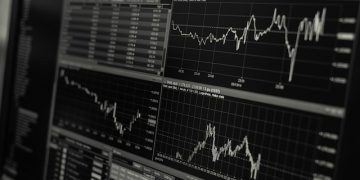(Updates to U.S. close of trading)
* The Dow hit all-time highs
* Bitcoin breaks above $50,000
* Government bond yields leap
* Oil prices close to 13-month highs, supported by Texascold snap
By Saqib Iqbal Ahmed
NEW YORK, Feb 16 (Reuters) – The Dow Jones IndustrialAverage notched a record closing high, joining a global marchpropelling stock indexes to record highs on Tuesday, asinvestors bet that COVID-19 vaccinations and U.S. stimulus willdeliver a durable economic recovery after a year of lockdowns.
Bitcoin added to the bullish mood, brieflyclimbing above $50,000 for the first time, while prospects of”reflation” – a boost in inflation from extraordinary fiscalstimulus – pushed U.S. Treasury yields higher.
U.S. President Joe Biden was traveling to Wisconsin onTuesday to press his case for a $1.9 trillion pandemic reliefbill in the political battleground state that helped secure hisvictory in last year’s presidential election.
The MSCI’s global stock index was about flatat 684.70 after hitting a record high of 687.26 earlier in thesession.
On Wall Street, the Dow hit an all-time high on Tuesday,while the S&P 500 and the Nasdaq retreated slightly from recordlevels, as investors bet on more fiscal aid to lift the world’sbiggest economy from a coronavirus-driven slump.
“The reflation trade continues to push equity markets acrossall industries and multi-caps … and this rally could continuein the near-term,” said Tony Bedikian, head of global markets atCitizens Bank in Boston.
The Nasdaq dipped as technology stocks moved lower, whileconcerns over rising interest rates kept the benchmark S&P 500little changed.
The Dow Jones Industrial Average rose 64.35 points,or 0.2%, to close at 31,522.75, the S&P 500 lost 2.24points, or 0.06%, to finish at 3,932.59 and the Nasdaq Compositedropped 47.98 points, or 0.34%, to end at 14,047.50.
European shares ended about flat around a one-year peak onTuesday as a boost from major mining and bank stocks wastempered by losses in most other sectors, with investorsremaining uncertain over a euro zone economic recovery.
The pan-European STOXX 600 index finished down0.06%.
The 10-year U.S. Treasury yield rose above 1.3% for thefirst time in nearly a year on Tuesday and the yield curvesteepened as expectations of extended fiscal and monetarystimulus alongside hopes of an economic upswing added momentumto the reflation trade.
“The market has fully embraced the prospects of Biden’s $1.9trillion stimulus, and the accelerated vaccine rollout issupport of further bearish price action as well,” Westpacstrategists told clients.
Bond yield curves – considered a reliable barometer ofgrowth expectations – have also steepened, with the gap betweentwo-year and 10-year U.S. notes now around 117 bps, the widestsince March 2017..
The U.S. dollar bounced off three-week lows as bullishcomments from a U.S. Federal Reserve official and upbeatmanufacturing data helped arouse investor risk appetite.
Against a basket of its rivals, the greenback gained0.245% to 90.555, after earlier falling to 90.117, its lowestlevel since Jan. 26.
Bitcoin briefly soared above $50,000 to anall-time high, adding steam to a rally fueled by signs that theworld’s biggest cryptocurrency is gaining acceptance amongmainstream investors and companies. The cryptocurrency was lastup 1.5% at $48,649.25.
Oil prices hovered near 13-month highs on Tuesday, supportedby a deep freeze in the U.S. South that shut wells and oilrefineries in Texas.
Brent crude futures settled at $63.35 a barrel, up 5cents or 0.08%, while U.S. crude oil futures settled at$60.05 a barrel, up 58 cents, or 0.98%.
U.S. natural gas futures jumped as much as 10.4% on Tuesdayto an over three-month high as bone-chilling weather across theUnited States disrupted pipeline flows and pushed up heatingdemand.
Spot gold XAU= was down 1.34% at $1,794.06 an ounce.
(Reporting by Saqib Iqbal Ahmed; Editing by Dan Grebler andJonathan Oatis)




